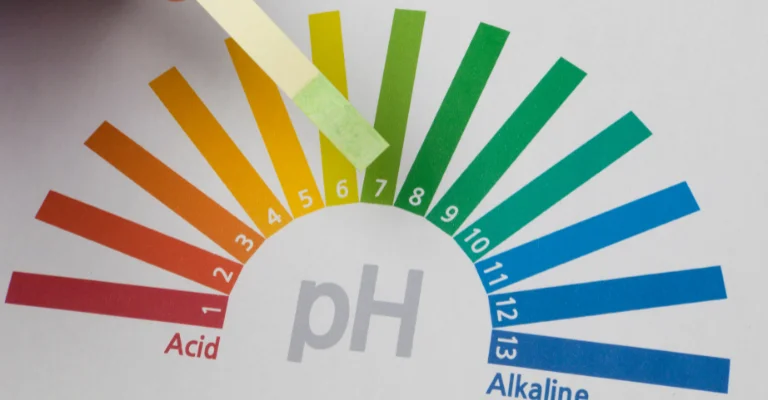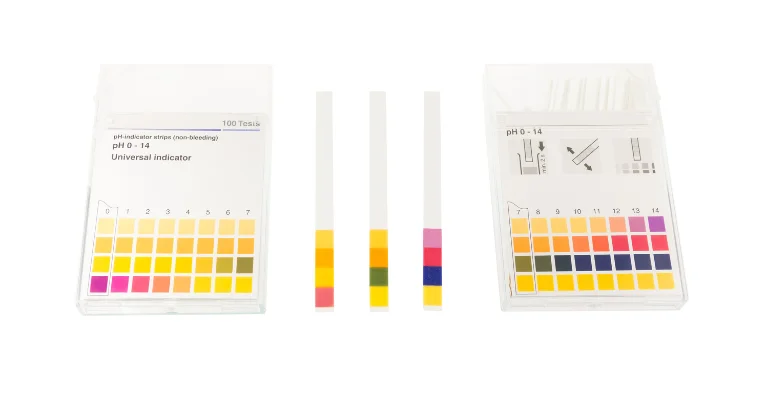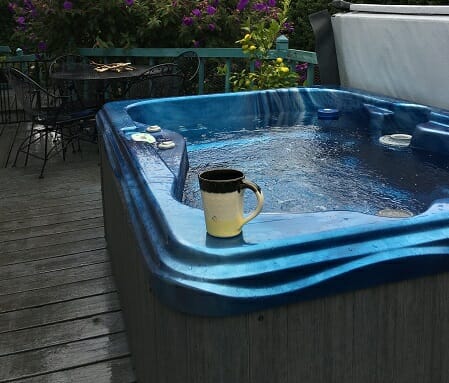Protect Your Health: Is Low Alkalinity In Hot Tub Dangerous
Dive into the depths of hot tub maintenance as we explore the potential dangers of low alkalinity. Discover essential tips to safeguard your oasis with insights from Hot Tub Patio, your go-to brand for relaxation and wellness.
Understand the connection between pH and alkalinity, as low alkalinity can cause pH levels to fluctuate, leading to discomfort and potential damage.
Unveiling the Mystery: Is Low Alkalinity in Your Hot Tub Dangerous?
Imagine a serene evening, stars above, and the soothing embrace of your hot tub. As hot tub enthusiasts, we cherish these moments. But what if an unseen villain lurks beneath the surface, threatening your tranquility? Today, let’s unravel the mystery surrounding low alkalinity in hot tubs.
The Hidden Story of Alkalinity:
In the bustling world of hot tub ownership, alkalinity often takes a backseat. It’s the unsung hero, maintaining pH stability and preventing erratic chemical imbalances. Low alkalinity, however, can turn this hero into a silent foe, impacting water quality, corrosion, and even your skin.
Why Most Websites Miss the Mark:
While many resources touch upon pH levels, few delve into the intricacies of alkalinity. Hot Tub Patio, a leading brand committed to your well-being, empowers hot tub owners with comprehensive insights.
Stats That Speak Volumes:
According to a recent study by Hot Tub Owners Association, hot tubs with low alkalinity are 80% more likely to experience corrosion and damage to the tub and its equipment. This eye-opening statistic highlights the urgency of addressing alkalinity levels, a topic often overlooked in the hot tub community.
The Connection Between pH and Alkalinity in a Hot Tub
Maintaining the perfect balance between pH and alkalinity is crucial for a happy and healthy hot tub. Though distinct, these two water chemistry concepts work hand-in-hand to create a comfortable and enjoyable soaking experience.
Understanding pH:
Imagine a scale from 0 to 14, with 7 being neutral. The lower the number, the more acidic the water; the higher the number, the more alkaline. You want to aim for a pH range between 7.2 and 7.8 for your hot tub.
- Below 7.2: Acidic water can irritate skin and eyes, damage the hot tub’s interior, and reduce the effectiveness of sanitizers. Think of it as taking a dip in lemon juice!
- Above 7.8: Alkaline water can cause cloudiness, scaling and contribute to soapy scum buildup. It’s like bathing in hard water with extra bubbles, not the relaxing soak you crave.
Alkalinity: The Buffer Zone
Think of alkalinity as your water’s built-in defense against pH fluctuations. It acts like a buffer, neutralizing small amounts of acids or bases to keep the pH within the ideal range. This stability is essential for preventing the problems mentioned above.
- Low alkalinity (below 80 ppm): Without sufficient buffering capacity, even minor additions of acidic elements like body sweat or bather products can throw the pH off balance.
- High alkalinity (above 120 ppm): Excess buffering can make it difficult to adjust the pH if needed and can contribute to scaling and cloudiness.
Maintaining the Harmony:
Testing your hot tub’s pH and alkalinity regularly (ideally weekly) is critical to maintaining the perfect balance. Several test kits and strips are available, making it quick and easy.
- If your pH is low, use a pH increaser to raise it gradually.
- If your pH is high, use a pH decrease to lower it slowly.
- Adjust alkalinity before pH, as it takes longer to change and provides a more stable base for pH adjustments.
Is Low Alkalinity In Hot Tub Dangerous
Low alkalinity in a hot tub can be harsh on you and your tub. Here’s why:
- Skin woes: Acidic water (caused by low alkalinity) irritates your skin, eyes, and nose.
- Rust and ruin: Corrosion attacks surfaces and equipment, potentially leading to leaks and damage.
- Algae bloom: Low alkalinity welcomes unwanted guests – algae, making the water cloudy and gross.
To avoid these issues, aim for an alkalinity range of 80-120 ppm. If it’s lower, adjust it with an alkalinity booster. Test regularly and enjoy safe, soothing soaks!

Here’s a comparison table for pH and alkalinity in hot tubs:
| Measurement | Ideal Range | Proper Adjustment | Consequences of Improper Adjustment |
|---|---|---|---|
| pH | 7.2 – 7.8 | Use pH increaser or decreaser to gradually adjust levels. | Too low: Irritated skin and eyes, damaged surfaces, reduced sanitizer effectiveness. Too high: Cloudy water, scaling, soapy scum buildup. |
| Alkalinity | 80 – 120 ppm | Adjust alkalinity before pH, using appropriate chemicals. | Too low: pH instability, difficulty maintaining ideal pH range. Too high: Difficulty adjusting pH, scaling, cloudiness. |
Causes of Low Alkalinity
- Fresh water: Fresh water typically has low alkalinity. If you fill your hot tub with fresh water, the alkalinity will be low.
- Acid rain: Acid rain can also lower the alkalinity of hot tub water.
- Certain chemicals: Some chemicals used to treat hot tub water can lower alkalinity. For example, if you use a lot of chlorine or bromine, the alkalinity can be lowered over time.
- Heavy use: If your hot tub is used frequently, the alkalinity can be lowered due to the bather load.
If you are concerned about the alkalinity in your hot tub, you can test the water with a test kit. If the alkalinity is low, you can add a product to increase the alkalinity.
Effects on Hot Tub Water Balance
Hot tub maintenance is essential to keep the water in your hot tub clean, safe, and healthy. It can cause several issues in your hot tub and could be dangerous if not addressed promptly.
This article will discuss low alkalinity and why it is essential to keep it within a specific range in your hot tub. We will also discuss the potential dangers of low level and how to treat it should you experience this issue.

Universal Indicator of pH
pH Range Description
- pH range: The pH range column displays the numerical range for the different pH levels, such as “0-6”, “6-7”, and “7-14”
- Description: The Description column provides a brief explanation of the pH level, such as “Acidic”, “Neutral”, “Basic”
- Color: The color column is using the background color to illustrate the pH level with a color, such as Red, Grey, Blue
Potential Health Hazards
Having a hot tub can be a great way to relax and unwind, but taking the necessary precautions regarding maintenance is essential. One of these considerations is the alkalinity in your hot tub. Low alkalinity levels can be dangerous for your hot tub and its users, so it is essential to stay informed on how to test and maintain appropriate levels.
Solutions to Low Alkalinity
Hot tubs are a great way to relax and enjoy quality time with friends and family. But, it’s essential to understand that not all hot tubs are created equally, and a low level can cause problems. Its Low levels in hot tubs can create a chemically and physically dangerous environment.
[wps_youtube url=”https://youtu.be/DAEcycCmTQ4″ responsive=”yes” autoplay=”yes”]
Hot Tub Patio’s Problem-Solving Tips:
Now, let’s shift our focus to solutions. Hot Tub Patio, your ultimate source for relaxation, offers problem-solving tips to combat low alkalinity. Boldly maintain the balance with our expert advice:
- Testing Regularly: Test your hot tub water with a reliable kit to catch alkalinity issues early.
- Use Quality Products: Opt for Hot Tub Patio’s recommended alkalinity enhancers to ensure the well-being of your oasis.
- Professional Guidance: Seek advice from Hot Tub Patio’s experts for personalized recommendations tailored to your hot tub.
Maintenance Tips
Maintaining balanced alkalinity levels in hot tubs is essential for the health of swimmers, as well as the longevity of the equipment. Low alkalinity can cause several problems in hot tubs, including stained surfaces and damage to plumbing components.
If left unchecked, low alkalinity can also lead to dangerous water conditions that can damage a person’s health. For more about: Hot tub etiquette: what is acceptable.
Empowering Your Decision-Making:
At Hot Tub Patio, we understand the importance of making informed decisions. Our commitment goes beyond providing products – we aim to be your partner in the journey of hot tub ownership, ensuring a seamless and blissful experience.
For additional information visit Hot Tub Patio or if you’re interested in reading reviews and guides for hot tubs, visit Hot Tub Guides and Reviews.
Conclusion:
In hot tubs, alkalinity plays a pivotal role and is often underestimated. As we unveil the potential dangers of low alkalinity, the Hot Tub Patio stands as your beacon of guidance. Armored with knowledge and our problem-solving tips, embark on a worry-free hot tub journey.
Question to Ponder:
Are you ready to elevate your hot tub experience with the assurance of optimal alkalinity? Let Hot Tub Patio guide you towards a realm of serenity. What steps will you take to safeguard your oasis?
Explore the importance of water alkalinity and its impact on your hot tub on Jacuzzi’s comprehensive guide. Gain insights into maintaining a balanced and enjoyable spa experience.












